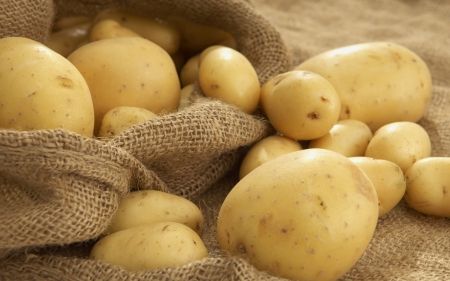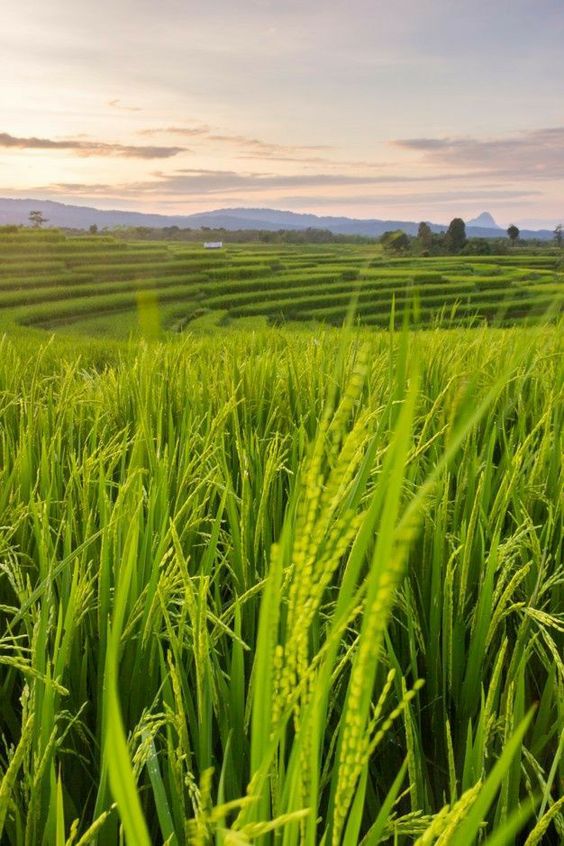Potato Plant Diseases 2024: Complete Control and Prevention Guide
Potato Plant Diseases,Potatoes are a staple food crop worldwide, but they are susceptible to various diseases that can significantly reduce yield and quality. Recognizing and addressing these diseases promptly is crucial for successful potato cultivation. This article will delve into some of the most common potato plant diseases, their symptoms, causes, and prevention methods.
Contents
Fungal Diseases: A Closer Look
Late Blight (Phytophthora infestans):
Late blight is a particularly devastating potato disease, capable of causing rapid defoliation and tuber rot. It thrives in cool, wet conditions, making it especially prevalent in regions with high humidity and frequent rainfall. Symptoms include dark, water-soaked spots on leaves, stems, and tubers. If left unchecked, late blight can spread rapidly throughout a field, leading to significant yield losses.
Prevention strategies for late blight include:
- Planting resistant varieties: Cultivating potato varieties that have been bred to exhibit resistance to late blight can significantly reduce the risk of infection.
- Crop rotation: Rotating potatoes with non-host crops can help disrupt the life cycle of the fungus, reducing its prevalence in the soil.
- Fungicide applications: Applying fungicides at the first signs of infection can help control the spread of late blight. However, it is important to use fungicides responsibly and in accordance with local regulations to minimize the risk of environmental contamination.
Early Blight (Alternaria solani):
Early blight is another common fungal disease that affects both above-ground and underground parts of the potato plant. It causes target-shaped lesions on leaves and stems, and dry rot on tubers. Unlike late blight, early blight is more tolerant of dry conditions and can be a significant problem in regions with hot, dry summers.
Prevention strategies for early blight include:
- Good crop hygiene: Removing and destroying infected plant debris can help prevent the fungus from overwintering in the soil.
- Crop rotation: Similar to late blight, crop rotation can help reduce the prevalence of early blight.
- Fungicide applications: Fungicides can be used to control early blight, but they should be applied carefully to avoid harming beneficial insects.
Common Scab (Streptomyces scabies):
Common scab is a soil-borne disease that causes raised, corky scabs on potato tubers. It is more prevalent in alkaline soils and dry conditions. While it does not typically affect the above-ground parts of the plant, common scab can reduce the marketability of potatoes and lead to economic losses.
Prevention strategies for common scab include:
- Crop rotation: Rotating potatoes with non-host crops can help reduce the buildup of the fungus in the soil.
- Soil amendments: Adding organic matter to the soil can help improve its structure and reduce the risk of common scab.
- Resistant varieties: Some potato varieties are more resistant to common scab than others.
Rhizoctonia Solani:
Rhizoctonia solani is a soil-borne fungus that can cause root rot, stem canker, and black scurf on tubers. It can lead to stunted growth and reduced yields. Rhizoctonia solani is particularly problematic in cool, wet conditions.
Prevention strategies for Rhizoctonia solani include:
- Crop rotation: Potato Plant Diseases,Rotating potatoes with non-host crops can help reduce the prevalence of the fungus in the soil.
- Soil amendments: Potato Plant Diseases,Adding organic matter to the soil can help improve its drainage and reduce the risk of Rhizoctonia solani.
- Fungicide treatments: Potato Plant Diseases,Fungicides can be used to control Rhizoctonia solani, but they should be applied carefully to avoid harming beneficial organisms.

The Positive and Negative Impacts of Potato Plant Diseases
Potato plant diseases can have significant impacts on both agricultural production and human health. Understanding these impacts is crucial for developing effective prevention and control strategies.
Negative Impacts
- Reduced Yield: Potato Plant Diseases can cause premature death of plants, leading to reduced yields and lower crop quality.
- Economic Loss: Potato Plant Diseases outbreaks can result in significant economic losses for farmers, processors, and consumers due to decreased production, increased costs, and potential food shortages.
- Food Safety Concerns: Some diseases can cause the production of toxins in potatoes, posing risks to human health if consumed.
- Environmental Impacts: Potato Plant Diseases can disrupt ecosystems, leading to soil erosion, nutrient depletion, and increased pesticide use.
- Social and Economic Disruption: Potato Plant Diseases outbreaks can have social and economic consequences in regions heavily dependent on potato production, leading to job losses, food insecurity, and potential social unrest.
Positive Impacts
While the negative impacts of potato plant diseases are more prevalent, there are some potential positive outcomes:
- Stimulation of Research: Disease outbreaks can drive research and innovation in plant breeding, disease management, and agricultural technology.
- Increased Awareness: Public awareness of potato plant diseases can lead to increased consumer demand for safe and healthy food products.
- Improved Farming Practices: Growers may adopt more sustainable farming practices to reduce the risk of disease outbreaks.
- Development of New Disease-Resistant Varieties: Breeding programs can develop new potato varieties with enhanced resistance to specific diseases.
It is important to note that the overall impact of potato plant diseases depends on various factors, including the type of disease, the severity of the outbreak, and the effectiveness of management strategies.

why do potatoes get disease?
Potatoes can get diseases due to a variety of factors:
Environmental conditions:
- Temperature and humidity: Certain diseases, such as late blight, thrive in cool, wet conditions.
- Soil pH: The pH of the soil can affect the susceptibility of potatoes to some diseases, such as common scab.
- Soil drainage: Poor drainage can create conditions that favor the development of root rot and other diseases.
Pathogens:
- Fungi: Fungi are the most common cause of potato diseases, including late blight, early blight, common scab, and Rhizoctonia solani.
- Bacteria: Bacterial diseases such as ring rot and blackleg can also affect potatoes.
- Viruses: Viruses like potato virus Y and potato leafroll virus can cause significant damage to potato plants.
- Nematodes: Parasitic nematodes can infect potato roots and stunt plant growth.
Agronomic practices:
- Planting infected seed potatoes: Using infected seed potatoes can introduce diseases into a field.
- Poor crop hygiene: Leaving infected plant debris in the field can provide a source of inoculum for diseases.
- Overcrowding: Overcrowded potato plants are more susceptible to diseases due to increased competition for resources and reduced air circulation.
- Inadequate fertilization: Nutrient deficiencies can weaken plants and make them more susceptible to disease.
- Excessive irrigation: Overwatering can create conditions that favor the development of root rot and other diseases.
Spread of pathogens:
- Wind: Wind can carry fungal spores and other pathogens from infected plants to healthy ones.
- Water: Rain and irrigation water can spread pathogens from infected plants to healthy ones.
- Insects: Some insects, such as aphids, can transmit viruses to potato plants.

Prevention is Key: Tips for Healthy Potato Plants
While it’s always preferable to prevent diseases, here are some proactive steps you can take:
1. Select Resistant Varieties: Opt for potato varieties that have been bred to exhibit resistance to common diseases in your region. These varieties can significantly reduce the risk of infection and minimize the need for chemical interventions.
2. Practice Crop Rotation: Avoid planting potatoes in the same field year after year. Rotating crops can help disrupt the life cycles of disease-causing pathogens, reducing their prevalence in the soil. This practice is particularly effective for managing soil-borne diseases like common scab and Rhizoctonia solani.
3. Maintain Sanitary Practices: Before planting, thoroughly clean the field of any residual plant matter, weeds, and other potential sources of disease. This helps to eliminate potential overwintering sites for pathogens and reduces the risk of infection.
4. Ensure Proper Water Management: Adequate drainage is crucial for preventing waterlogging, which can create favorable conditions for the development of fungal and bacterial diseases. Well-drained soil promotes healthy root growth and reduces the risk of root rot.
5. Provide Balanced Fertilization: Supplying your potato plants with a balanced diet of essential nutrients can bolster their overall health and resilience. This makes them less susceptible to diseases and improves their ability to withstand environmental stressors. Avoid excessive fertilization, as it can lead to nutrient imbalances and create conditions that favor certain pathogens.
Source:
- Potato Disease Identification: https://potatoes.ahdb.org.uk/disease-defects
- Potato Diseases: https://cropscience.bayer.co.uk/agronomy-id/diseases/potato-diseases
- Potato Diseases & Common Pests: https://plantura.garden/uk/vegetables/potatoes
- List of potato diseases: https://en.wikipedia.org/wiki/List_of_potato_diseases




